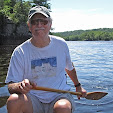Remember that scene from Jurassic Park where Jeff Goldblum’s character, Dr. Malcolm, questions the bio-engineer’s reassurance that the dinosaurs couldn't possibly breed outside the park because they were all made females? And Dr. Malcolm warns that “life finds a way?”
In Cuba, an island nation isolated in so many ways from the rest of the world, that’s the way it is with art. Despite the stifling effects of a half-century embargo by the US, and a communist government not known for its support of free expression, Cuban art is finding a way.
Some Cubans are managing to rise above their hardscrabble existence and soar the clear-air currents of creativity.

During my first couple of days staying in Old Town Havana, it was hard to see beyond the surface—the work-a-day hustle and bustle of
Habaneros, the widespread decay of buildings and infrastructure. I found all those forms, faces, colors and textures, if not uplifting, at least oddly photogenic. At first, that's all I saw.
But then, exploring side streets and poking my head into doors, I started seeing art and even meeting a few of the artists at work. Indeed, at least some Cubans are managing to rise above their hardscrabble existence and soar the clear-air currents of creativity.
MESSAGE OR MEDIUM
What does Cuban art have to say? I cannot begin to judge where creative expression stops and political statement begins, though I suspect nothing even close to the subversive ever finds its way to a public space in Cuba. Nonetheless, even if the works I discovered might fall a bit short of freeing the person, certainly, simply by capturing a place, a time, a feeling, they have the power to free the spirit.

To understand this, it helps to draw a parallel with Cuban music, a medium no one seems to fault when it eschews weighty issues like oppression and injustice. Cuban art—or should I say the art I was able to see in a narrow window of space and time—is, like the music, more about escapism than protest. It's not so much the lyrics that matter. It's the rhythm.
The media range from straw, to paint, to bronze; the canvases, from wet paper to building walls, to towering cliffs; the venues, from back alley, to back-room gallery, to stately hall.
Here are just a few images of that vibrant, irrepressible art.
 |
| "The Eye of the Hurricane," "I don't want cheese anymore." What does this say...and to whom? |
 |
| Untitled sculpture by Roberto Fabelo in Havana's Plaza Vieja |
 |
| Painter Lázaro at work in a back room in Viñales. |
 |
| The "Prehistoric Mural" near Viñales turned out to be a very contemporary mural with a prehistoric theme. |
 |
| At Havana's Experimental Graphics Studio, an exhibition of rhinos-only prints. |
 |
| "La Conversación" by Étienne Pirot. Being in front of the trade center building, this would be translated, I was told, as "The Negotiation." |
 |
| Private gallery in the back room of my friend Leandro's home. |
|
|
 |
| Mural by Andrés Carrillo in Havana Vieja depicts 67 iconic figures in Cuban history. |
 |
| In the lobby of the National Museum of Fine Arts |
 |
| Artist at work in the Experimental Graphics Studio in Havana. |
 |
| "Blue Flower" – one of four prints I bought at the Experimental Graphics Studio |
 During my first couple of days staying in Old Town Havana, it was hard to see beyond the surface—the work-a-day hustle and bustle of Habaneros, the widespread decay of buildings and infrastructure. I found all those forms, faces, colors and textures, if not uplifting, at least oddly photogenic. At first, that's all I saw.
During my first couple of days staying in Old Town Havana, it was hard to see beyond the surface—the work-a-day hustle and bustle of Habaneros, the widespread decay of buildings and infrastructure. I found all those forms, faces, colors and textures, if not uplifting, at least oddly photogenic. At first, that's all I saw. To understand this, it helps to draw a parallel with Cuban music, a medium no one seems to fault when it eschews weighty issues like oppression and injustice. Cuban art—or should I say the art I was able to see in a narrow window of space and time—is, like the music, more about escapism than protest. It's not so much the lyrics that matter. It's the rhythm.
To understand this, it helps to draw a parallel with Cuban music, a medium no one seems to fault when it eschews weighty issues like oppression and injustice. Cuban art—or should I say the art I was able to see in a narrow window of space and time—is, like the music, more about escapism than protest. It's not so much the lyrics that matter. It's the rhythm.















3 comments:
Beautifully described, Jeffrey. Wonderful works of art. Thank you for sharing!
Wow .... really nice. I would love to go there one day.
Thanks, Rob. Were you and Lupita able to see some of the art when you were there?
Post a Comment